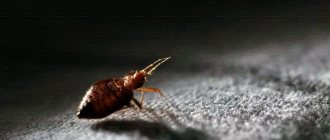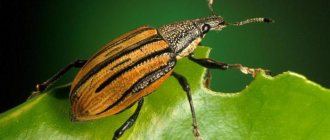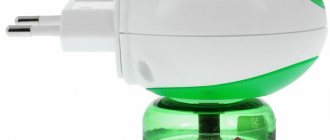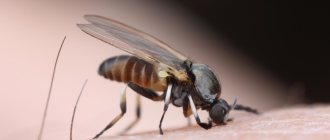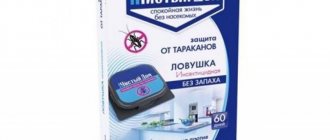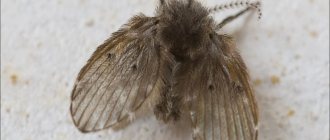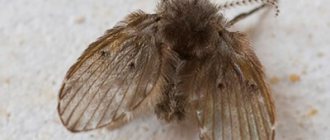How to get rid of midges in an apartment
Preventing the appearance of midges is easier than eliminating them. Follow preventive measures to save yourself from searching for methods of destruction. Here are some basic rules:
- maintaining hygiene in the premises, especially in the kitchen: weekly wet cleaning, washing dishes immediately after use;
- control over the fruit basket: it is important to prevent rotting of the products, which may not be noticeable from the outside. Apples often spoil and are “populated” by fruit flies on the side on which they lie;
- regular garbage removal - every day, without waiting for the bin to be filled;
- hygiene of cleaning products: after use, wash dish sponges and rags with soap and wring them dry;
- regularly cleaning pet bowls from food residues;
- changing the litter in the cat tray, washing and dry-cleaning furniture that is often visited by the pet;
- regular ventilation of the apartment, regardless of the time of year;
- control over surfaces in the kitchen and other rooms - they need to be wiped dry after cooking and cleaning.
And of course, you can’t leave food on the table during the hot season. Midges feel comfortable at temperatures of 20–25 degrees. They are attracted to moist environments, so be sure to change stagnant water in carafes, bowls, glasses, and humidifiers.
If insects have just appeared in your apartment, you can try to get rid of midges and their larvae using several proven methods.
Midges in the apartment: types and causes of appearance
Typically, the appearance of flying insects in houses and apartments begins in the warm season. But midges are a special case: they can appear at any time. To get rid of them, first of all you need to determine the source of insect spread. Midges are often confused with small flies and even mosquitoes - but unlike these “vagrant” pests, the former more often end up in a room with new plants and food. There are two types of house flies:
- Fruit (kitchen, fruit) midges. Drosophilas circling over food do not pose a threat to humans. But if you eat fruit infected with larvae, you can get indigestion. Kitchen midges are highly fertile - the female lays from a couple of hundred to one and a half thousand eggs per day. Drosophila live on food, but they can get into the house through animal hair, street clothes and shoes. Their favorite food is rotting organic matter, so midges quickly infest both in stale apples and in pets' bowls, in spilled yogurt and the remains of wine in a glass.
- Ground flies. If you notice insects near your indoor plants, the cause is most likely due to overwatering. Moist soil is an ideal environment for sciarid eggs to be laid. Insects enter the premises through ventilation and garbage chutes, from the basement, from the entrance and from neighbors. It also happens that an infected plant is brought from a store. One midge does not live long - from a week to two, but during this time it manages to lay larvae in most pots with plants.
If there are midges in flowers or seedlings, plug in the device that is found in every home
This year in winter, almost all my flowers were affected by midges. For a long time I couldn’t understand where she brought them into the house from. I found the reason at random. Today I’ll tell you about it, and also tell you about a miracle method that came to mind purely by chance.
But, before I continue, I want to ask you to subscribe to me on
INSTAGRAM and TELEGRAM , there are many other useful tips on gardening and flowers.
The midges that appear in our flower pots at home are fungus gnats, in simple terms, or sciarids, in scientific terms. The infection is utter, I would add on my own behalf. Loves to grow in indoor flowers and seedlings. Getting rid of midges is difficult. But don’t despair, there is always a way out!
Why do these parasites appear in our home:
- There are mosquito eggs in purchased soil.
This is the most common reason for the appearance of unexpected flying reptiles. Lately, soil manufacturers, frankly speaking, have been slacking off, scattering such garbage into bags that you never even dreamed of. But we hope that store-bought soil is rich in microelements. Yeah, right now! This is exactly how I brought mosquitoes into the apartment - I transplanted the orchids into poor-quality soil, since it was from them that the sciarids flew. - Without even noticing it, we breed midges in pots
. We do this by adding fertilizers to flowers and seedlings: dried tea leaves, coffee cake, banana peels. Who even does that today? Be that as it may, the fact remains that this waste is the most favorable environment for sciarids.
To get rid of them, there are many ready-made drugs and folk remedies. But there will not be a word about them in the article. I have another way of fighting, in which I don’t have to put in any effort at all, or rather almost.
Almost all of us have a fumigator at home. This is a device into which we insert special plates (their price is 10 rubles in the store) and connect them to the network. When exposed to electricity, an aroma begins to emanate from the plate, sometimes imperceptible to our nose, which has a detrimental effect on mosquitoes and flies. Yes, yes, you probably often turn on the fumigator in the summer when it’s hot, when you open the windows and blood-sucking mosquitoes don’t let you sleep.
Who are our sciarids? That's right, mosquitoes. This means that the fungicide will also act against them. And I tried it. I plugged the device into the outlet for 7 days, changing the plate every day. Now you will say that this is long. Nothing like this! Yes, on the first day the aroma from the fungicide will kill flying individuals, but their larvae are still sitting in the ground. They hatch in 5-6 days. That’s why I ran the fumigator for a week.
Note!
To exterminate midges, it is advisable to take all your plants into one room in which you will turn on the fumigator. This way you will kill all the mosquitoes in the house in one gulp.
How do you exterminate midges in pots of flowers or seedlings?
Source
Remedies for midges in the apartment
First of all, you need to eliminate the source of insect breeding - throw away rotting food and restore order.
Trap in a bottle
If the midges have already scattered around the kitchen, cleaning alone will not save you - the insects will continue to lay eggs on all suitable surfaces. First you need to limit the area where they stay. To do this, insects are lured to their favorite organic foods. For example, overripe apples, pears and bananas, sweet liqueur, honey or compote at the bottom of an open plastic bottle are suitable. Within a few hours, midges fly inside, after which the container must be closed and thrown away.
Vinegar and Soap Trap
A small jar is filled a quarter full with water with the addition of a tablespoon of apple cider vinegar and a teaspoon of dishwashing liquid. The solution is whipped until a slight foam appears. The smell of vinegar will attract insects, and the soap will prevent them from flying out of the jar.
Trap with film
A compromise from the two previous options: a liquid suitable for bait is poured into a jar and covered with cling film on top, in which holes are made with a toothpick. In pursuit of attractive products, midges will easily penetrate through the holes, but they will not be able to get back out - their wet wings will interfere. It is usually recommended to use jam, wine or beer that midges love as bait. You should not leave traps in the house for more than a day and place them near open windows and doors - there is a risk of attracting insects that live outside the apartment.
Funnel trap
The principle of operation is the same - midges should fly in, but not get out. With this option, take a bottle or jar and pour fruit juice or other suitable liquid into it. A paper funnel is inserted into the hole with the sharp end inward. The funnel is secured at the edges with adhesive tape or adhesive tape.
Glue traps
Adhesive tapes are sold in many stores, their cost varies from 30 to 300 rubles. The usual glue trap for flies is also effective for small pests. You can also find special plates against fruit gnats. They are placed next to infected plants or in the kitchen. Important: then the habitat of the midges will have to be removed - the flowers will have to be replanted and the spoiled fruit will have to be thrown away.
Repellents
Aerosol insecticides and chemicals for watering plants quickly and efficiently deal with insects. But they also cost more - from 150 to 800 rubles, depending on the volume, toxicity and strength of action. Aerosols should be sprayed throughout the room. For maximum effect, close windows and doors tightly before the “execution” - it is important to make sure that there is no food, dishes or personal hygiene products left on the tables. Insecticides are toxic and unsafe for pets and people. So during the treatment period you will have to leave the apartment with your pets, and before returning, do a wet cleaning and wash the textiles.
Fumigators
Products with liquid or plates that are heated in a device connected to an outlet are safer than aerosols. On sale you can find options costing from 100 to 500 rubles. The active ingredients in them can be both chemicals and natural plant extracts, such as chamomile or lavender. Some fumigators emit a slight aroma when heated, others are odorless. In any case, after using them, you need to ventilate the room and do a light damp cleaning.
Repellents
Midges do not live in places where there is a smell of wormwood. In summer, you can bring a plant from the street into the house and spread the branches around the room. If real wormwood is not nearby, camphor oil will do. A few drops of the product are slightly warmed up and left to cool in the room. Some popular spices also have repellent properties: basil, rosemary, lemon thyme, cloves and mint. You can use them to make an “anti-midge” tincture: stir six to seven tablespoons of spices into 0.5 liters of boiling water and cool, then strain through cheesecloth and add one tablespoon of vodka or alcohol. The surfaces are sprayed with the prepared solution.
